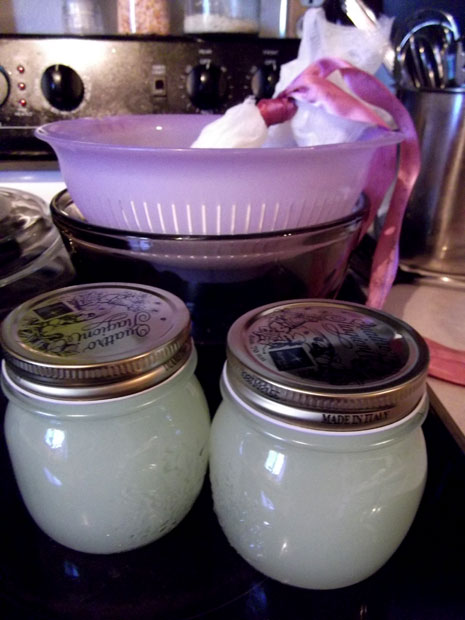FTC Disclosure: Delicious Obsessions may receive comissions from purchases made through links in this article. As an Amazon Associate I earn from qualifying purchases.Read our full terms and conditions here.
UPDATE 8/11/12: Since I wrote this post, I no longer use Mason jars for my ferments (learn why here). I have moved exclusively to using Pickl-It jars for my ferments. With these jars, there is no need to use a starter for your ferment. According to the Pickl-It website, “the Pickl-It lacto-fermentation system efficiently increases acidity, drops pH, and locks out damaging oxygen that neutralizes a wide-range of beneficial components including antioxidants, enzymes, bacteriocins, as well as probiotic bacteria.” While there are still going to be certain occasions where a starter might be needed, I am finding that to be few and very far between.
I have decided to stop using whey in my vegetable ferments. WHAT??? But, but, Sally Fallon says to use whey! And, that’s how I’ve always done it! How can I stop now?
I’ve come to this decision after reading two things – Sandor Katz’s Wild Fermentation and Kelsy’s post on The Liberated Kitchen. On my very first post of the Bad A** Bacteria series (lacto-fermented garlic), a reader posted a link to Kelsy’s article and from that point on, I’ve questioned whether or not to use whey as a starter in vegetable ferments. Kelsy makes such good points, that I’ve decided to stop using whey in my vegetable ferments.
In her post, Kelsy has us take a look at the list of bacteria that are found in fermented vegetables (from a book that I have now added to my to-read list):
- Lactobacillus brevis
- Lb. plantarum
- Leuconostoc mesenteroides
- Pediococcus acidilactici
- Ped. pentosaceus
Then, she shows us the list of bacteria typically found in plain yogurt, which is where I get my whey:
- Lactobacillus acidophilus
- Lb. casei
- Lb. rhamnosus
- Lb. bulgaricus
- Streptococcus thermophilus
- Bifidobacterium bifidum
Notice how there are no crossovers. Not one. The bacteria in the milk products are designed to eat milk sugars, like lactose. The bacteria in the vegetable products are designed to eat vegetable sugars. They are two totally separate organisms.
Hmmmm .. that got me thinking. Vegetable ferments and dairy ferments are two totally different things. The food itself is different and the bacteria needed to culture it are different. So, why would we add a dairy-based starter to our veggies? That is a good question. A question that I don’t think there is one right answer for. It does make me wonder if this is the reason why my vegetable ferments in which I’ve used whey have ended up with a slimy, goo-like brine, rather than a watery, refreshing brine (yes, you should drink the brine from sauerkraut, pickled garlic, etc. It is an awesome germ fighter!). Even though my ferments were not bad according to a thorough sniff test, they were not appetizing to eat.
Now, don’t get me wrong. Whey still has a place in my kitchen. It is great to use for items that don’t come with their own beneficial bacteria to help get the ferment started. Some examples of these are going to be lacto-fermented orange juice (and other juices), homemade mayonnaise, and fermented fruits that probably don’t have any exposure to soil bacteria. But, for vegetable ferments, we should strive to get the beneficial bacteria we need from the plants themselves. If you can get high-quality, organic veggies that are grown in live soil, then that should be all you need to get your vegetable ferments up and running.
If you can’t get organic veggies from live soil and you are in need of a non-dairy based starter, there are some options out there, such as Body Ecology’s Probiotic Vegetable Starter or Caldwell Starter Culture for Fresh Vegetables.
So, what do you think? Do you think whey should be used as a starter for veggies? Or, are you already doing this and I’m the last one to the no-whey party? Talk to me below!
P.S. If you’re at all interested in fermenting, you simply must buy Wild Fermentation. And, if you need another fantastic blog to follow, then I highly recommend the Liberated Kitchen, home to a couple of lovely ladies – Joy and Kelsey. For a fantastic article about the nutrition of whey and why we should still consume it, even if we don’t start our ferments with it, read this post from Divine Health: “The Many Benefits of Whey“. Plus, I’m not alone in my journey of not using whey for a started. Melanie, from the Pickle Me Too blog, has stopped as well.


75 Comments